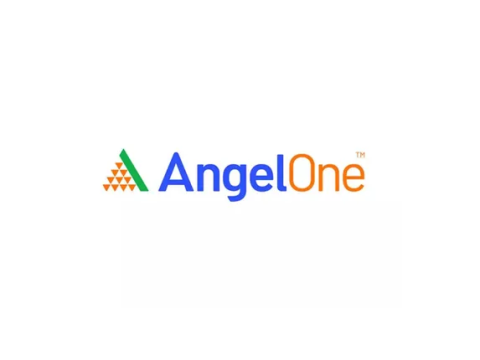Angel One Share Price Jumps 4 Percent; Immediate Resistance at Rs 3,350
Angel One share price jumped 4.04 percent on Thursday as sustained buying in the counter has resulted in bullish breakout on technical charts. Angel One continues to attract a growing number of retail investors and has expanded its offerings impressively. However, operational slowdowns—particularly in trading volumes and profitability—have cast a shadow over its otherwise strong client growth trajectory. Recent business updates and analyst opinions reflect both optimism about Angel One’s long-term relevance and caution regarding its near-term earnings potential.
Stock Performance: A Rally Driven by Optimism
Angel One's share price has demonstrated significant momentum, rising intraday 4.58% to Rs 3,271.70 on June 5, 2025. The stock closed the session at Rs 3,255, reflecting a continued rally since the company's May business update. Over the past month, the stock has returned an impressive 41.02%, and on a three-month basis, it has soared 55.49%. The annual return stands at 29.05%. Fueling this surge is a robust 19% uptick in investor search activity, suggesting growing interest in the counter amid retail buzz and broader capital market enthusiasm.
Operational Highlights: May 2025 Update
Client Growth and Acquisition Metrics
The company’s total client base expanded to 31.95 million, up 34% year-on-year. However, a deeper look reveals some cautionary data. Gross client acquisition dropped 43.1% YoY to just 0.5 million, from 0.88 million in May 2024. Sequentially, the number ticked up 1.7%, a sign that new acquisition may be stabilizing.
Trading Activity: Mixed Trends
Angel One reported a 23.4% YoY drop in average daily orders (ADO) to 5.79 million in May 2025. While that figure improved 3.2% on a month-over-month basis, it reflects weakening retail participation over the past year.
Similarly, average daily turnover (ADTO) fell 18.2% YoY to Rs 35.81 lakh crore. The options segment—a key revenue driver—saw a 9.1% YoY decline in F&O option premium turnover to Rs 14,400 crore. However, overall premium turnover grew 30.5% YoY, indicating robust activity in select areas.
Segmental Growth Bright Spots
Despite the challenges, some segments outperformed expectations:
Cash ADTO increased 4.2% YoY to Rs 8,600 crore.
Commodity ADTO surged 47.2% YoY to Rs 74,500 crore.
Retail market share in option premiums improved to 20%, a YoY gain of 77 basis points.
Mutual Funds and Client Funding
Angel One’s non-equity business is gaining traction. Unique SIPs rose 32.8% YoY to 628,280 in May 2025. The client funding book also showed strength, growing 46.2% YoY to Rs 4,005 crore.
Financial Performance: Q4 FY25 Paints a Stark Picture
Revenue and Profit Hit Hard
In Q4 FY25, the company reported a 22.1% YoY drop in revenue from operations to Rs 1,056 crore. The net profit fell sharply by 48.7% to Rs 174.5 crore, reflecting pressure on both top-line and bottom-line performance.
EBITDA also declined significantly—down 44% YoY to Rs 264.3 crore.
Broking Revenue and Margins
Net broking revenue was hit hard, declining 28% YoY to Rs 490.6 crore. The net profit margin contracted to 16.5%, a notable drop from 25.02% in Q4 FY24. On a full-year basis, the operating profit margin also softened to 38% in FY25 from 40% in FY24.
Dividend Declaration
Despite the decline in earnings, the board declared a final dividend of Rs 26 per share, translating into a dividend yield of 1.53%—a sign of confidence in long-term performance.
Analyst Views: Mixed but Leaning Bullish
Analyst Ratings and Targets
According to aggregated data, 75% of analysts rate the stock as a 'BUY', 12.5% 'HOLD', and 12.5% 'SELL'. The average target price is Rs 2,556.88—17.67% lower than the current market price—implying expectations of near-term correction.
Brokerage Recommendations
ICICI Securities: BUY with a target of Rs 3,000
Motilal Oswal Financial Services: BUY with a target of Rs 3,600
Market sentiment remains constructive, particularly with the revival in IPO activity and broader interest in capital market plays.
Fundamentals and Peer Positioning
Key Valuations and Ratios
Market Cap: Rs 29,541.50 crore
P/E Ratio: 23.87x vs industry average of 28.91x (suggesting undervaluation)
ROE: 27.1% for FY25 (3-year average: 36.1%)
ROCE: 25.8%
Dividend Yield: 1.47%
Growth Indicators
5-Year Profit CAGR: 66.9%
Median 10-Year Sales Growth: 22.6%
Promoter Holding: 35.55%, slightly down in recent years
Cash Flow Pressures
A key concern is the negative operating cash flow of Rs -1,812 crore in FY25, despite a 26% YoY rise in total assets to Rs 16,833 crore.
Strategic Environment and Industry Trends
Angel One continues to position itself as a full-service digital financial provider, offering mutual funds, insurance, loans, and commodity trading alongside equities and derivatives.
The capital markets sector in India is benefiting from revived IPO activity and deeper retail participation, but the industry also faces pressure from newer fintech platforms and ongoing regulatory changes that may impact profitability.
Investment Case: Balanced Pros and Cons
| Pros | Cons |
|---|---|
| Strong client base growth (+34% YoY) | Gross client acquisition down 43.1% YoY |
| Expanding market share in retail segments | Declining trading activity |
| Robust growth in SIPs and funding book | Profit and revenue sharply down in Q4 FY25 |
| Attractive valuation (P/E below peers) | Negative cash flow |
| Dividend yield supports investor return | Promoter stake has declined |
Conclusion: A Stock Worth Watching With a Cautious Lens
Angel One remains a leader in India’s financial services sector, bolstered by a growing client base and expanding service offerings. However, recent declines in profitability, cash flow, and trading activity raise red flags. For investors, the outlook hinges on the company’s ability to reinvigorate growth in its core broking operations while maintaining financial discipline.
Strategically, if Angel One can resolve its operational bottlenecks and re-accelerate client acquisition, the long-term potential remains intact. Near-term volatility, however, suggests that existing and prospective shareholders should approach with a mix of optimism and due diligence.
